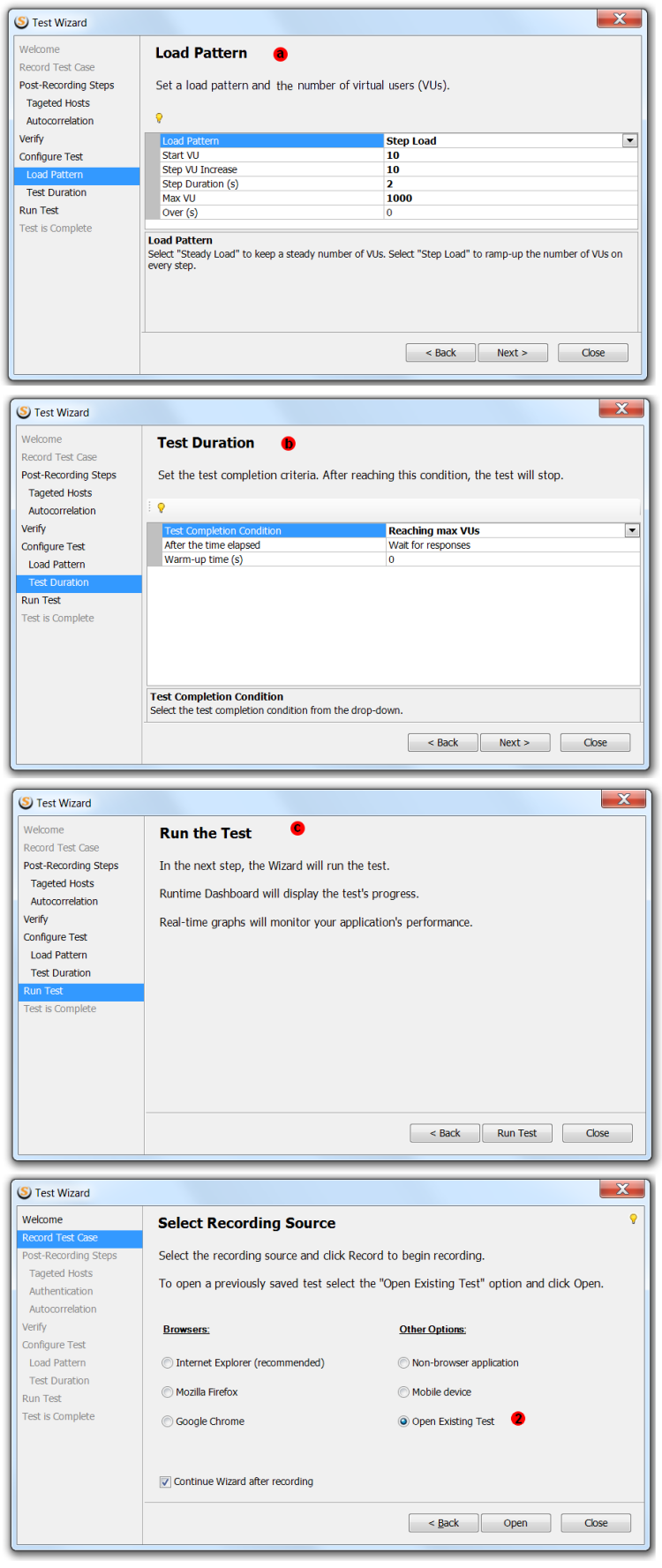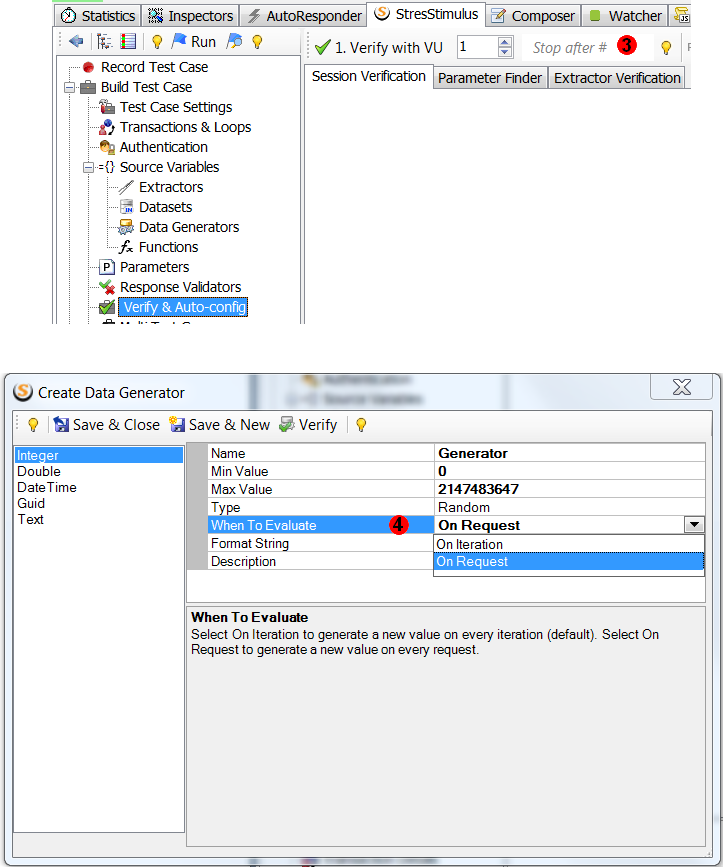The update released today includes the following enhancements:
1. Test wizard is expanded. Now the test wizard walks users not only through the test case configuration, but also through the major steps of test configuration and test run:
a. Selecting load pattern and the number of users
b. Selecting test duration
c. Launching the test

2. More Test Wizard options to initiate a test. Now Test Wizard gives you the option to open an existing test.
A number of improvements are implemented in the following areas:
3. Verify. If during the test case verification some errors or warnings are discovered, they should be reviewed one by one in the order of appearance from top to bottom. Depending on the situation, use the appropriate technique to address them. For example, create a missing parameter, delete a request that should be excluded from the test or ignore warnings that are irrelevant to the test's execution. After that, re-run Verify and move to the next error warning resolution. Since you should only focus on the next 1-2 errors/ warnings, there is no need to Verify the entire test.
Now you can specify a session number, after which Verify will stop, to save time. For example, if the error / warnings occurred in the sessions 20, 22, 40, 42, 60 … and you just addressed session 20, then you can run Verify to session 40 or 42. To do so, enter the session number in the " Stop After #" box on the verify toolbar.

4. Data Generator enhancement. Now you can decide when to evaluate data generators. Set the When To Evaluate property to On Iteration to generate a new value on every iteration (default). Or set it to On Request to generate a new value on every request.
5. Automation. Now you can execute a custom procedure before running a test case. One example of when this feature can be helpful is when specific test data can be inserted into the database only once. Before running the test, you can run a script that deletes the database records inserted by the previous test run.
To do so, in the Other Options section enter the command to launch the script in the Pre-run command line property. You can also specify a script timeout.

6. Parameterization control enhancements. A session number, in which parameters are being edited, is now displayed on parameterization control toolbar.

7. More accurate handling web applications that do not render webpages.
StresStimulus replays requests within a page asynchronously, to closely emulate browser behavior. However, in web services and some RIA applications, requests do not belong to a specific page and must be sent synchronously in the sequence they were recorded. In the previous versions, to achieve that, end-users needed to make all requests primary.
In the current version, StresStimulus automatically determines when test case requests do not need to be grouped in pages. In such situations, during replay, all requests will be sent sequentially in the same order as they were recorded. This saves time for configuring test cases and increase performance testing accuracy.
8. To avoid controller- agent compatibility issues, it is recommended to use the same StresStimulus version across all machines participated in a test. Now, the StresStimulus version installed on every machine is displayed in the load Agent section.

To navigate to other parts of the v3.7 release notes, click the links below:
StresStimulus 3.7 beta is available here.